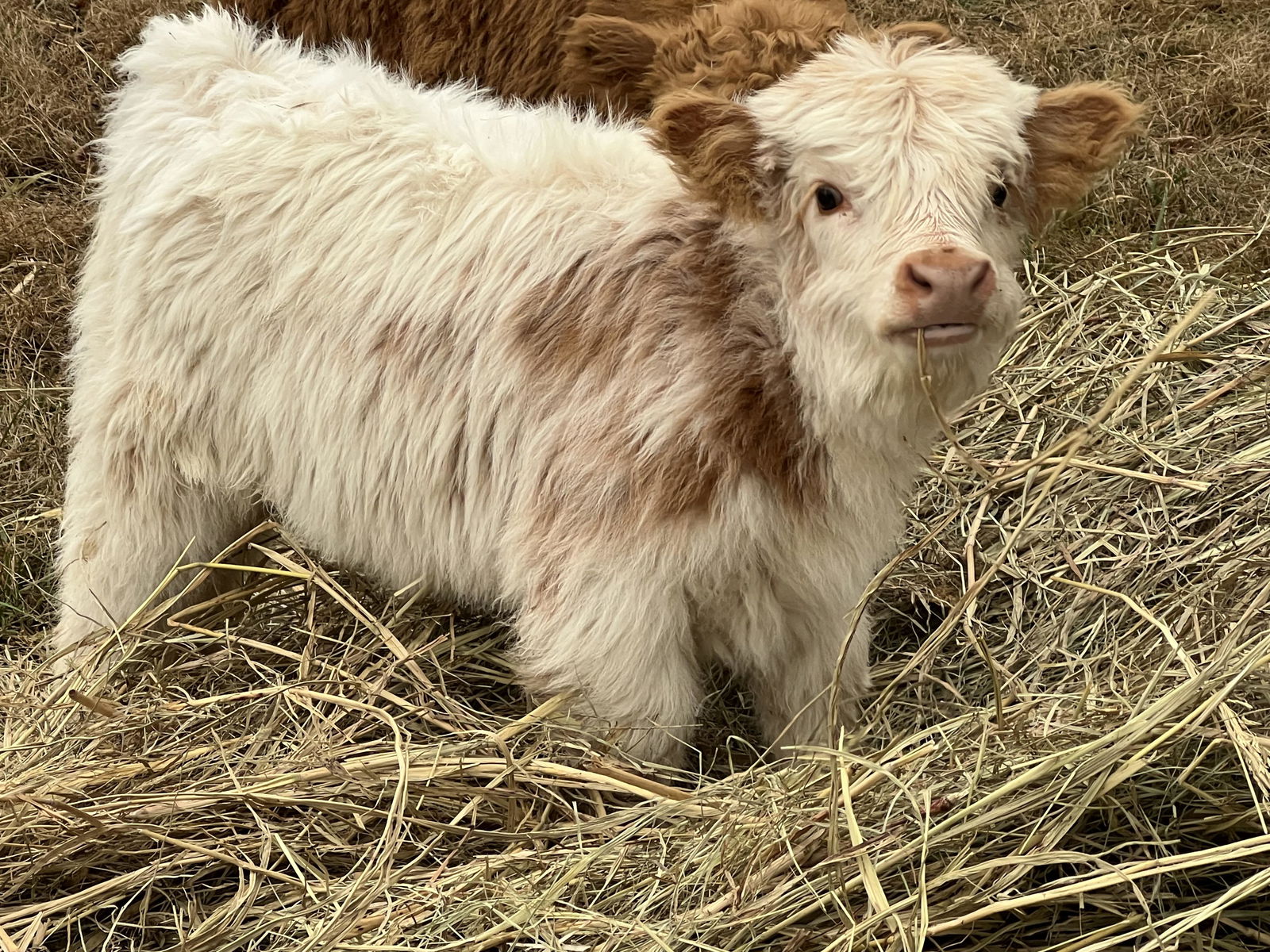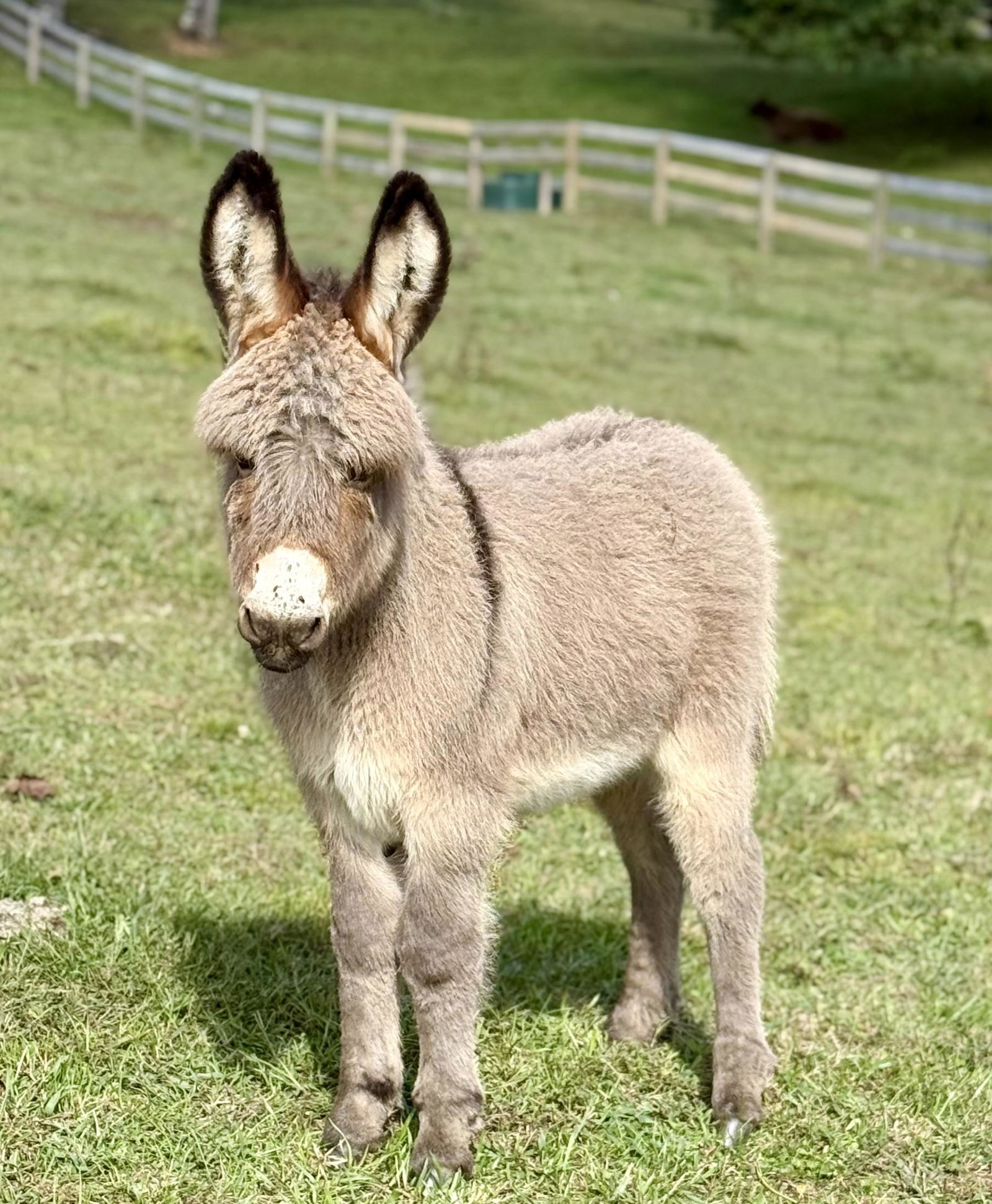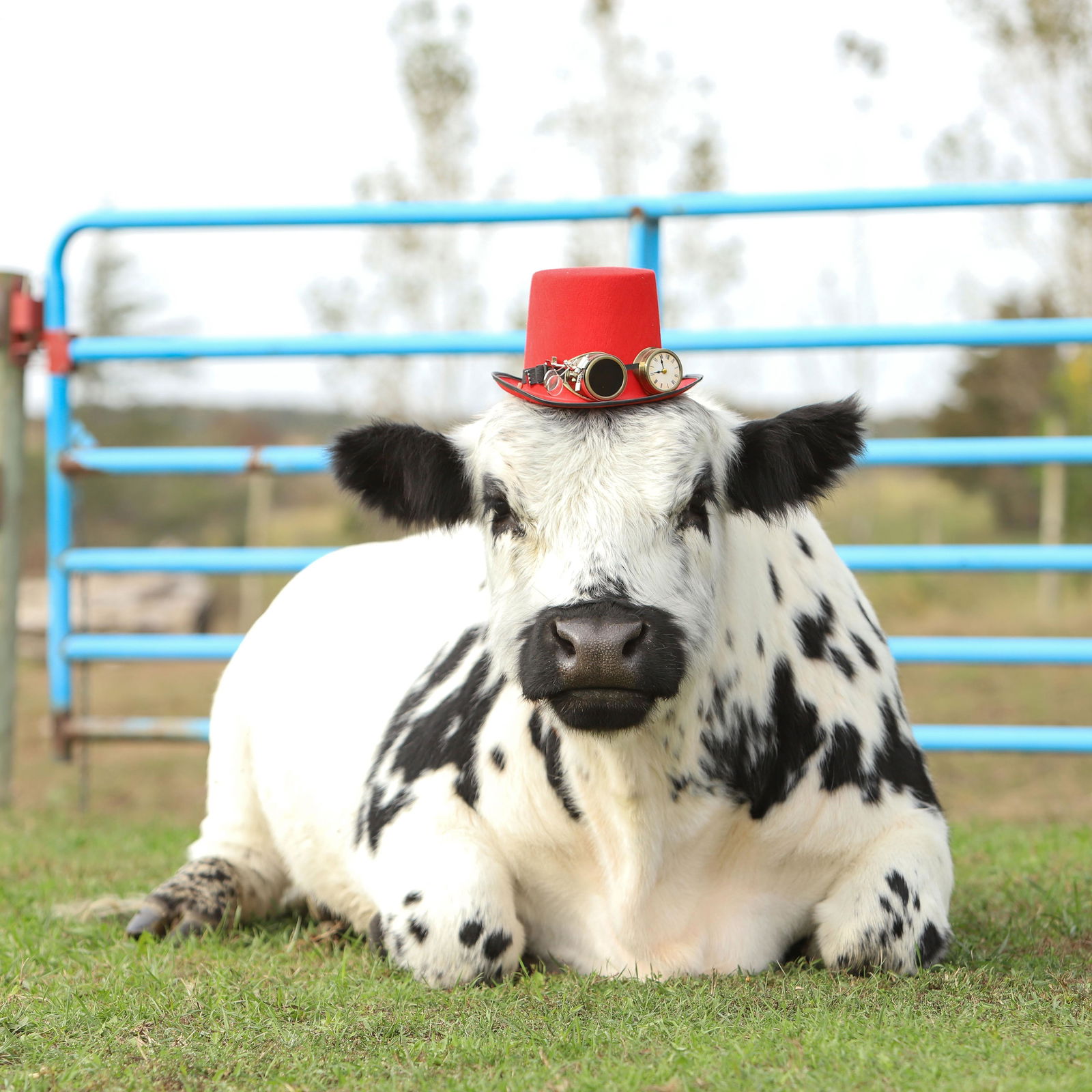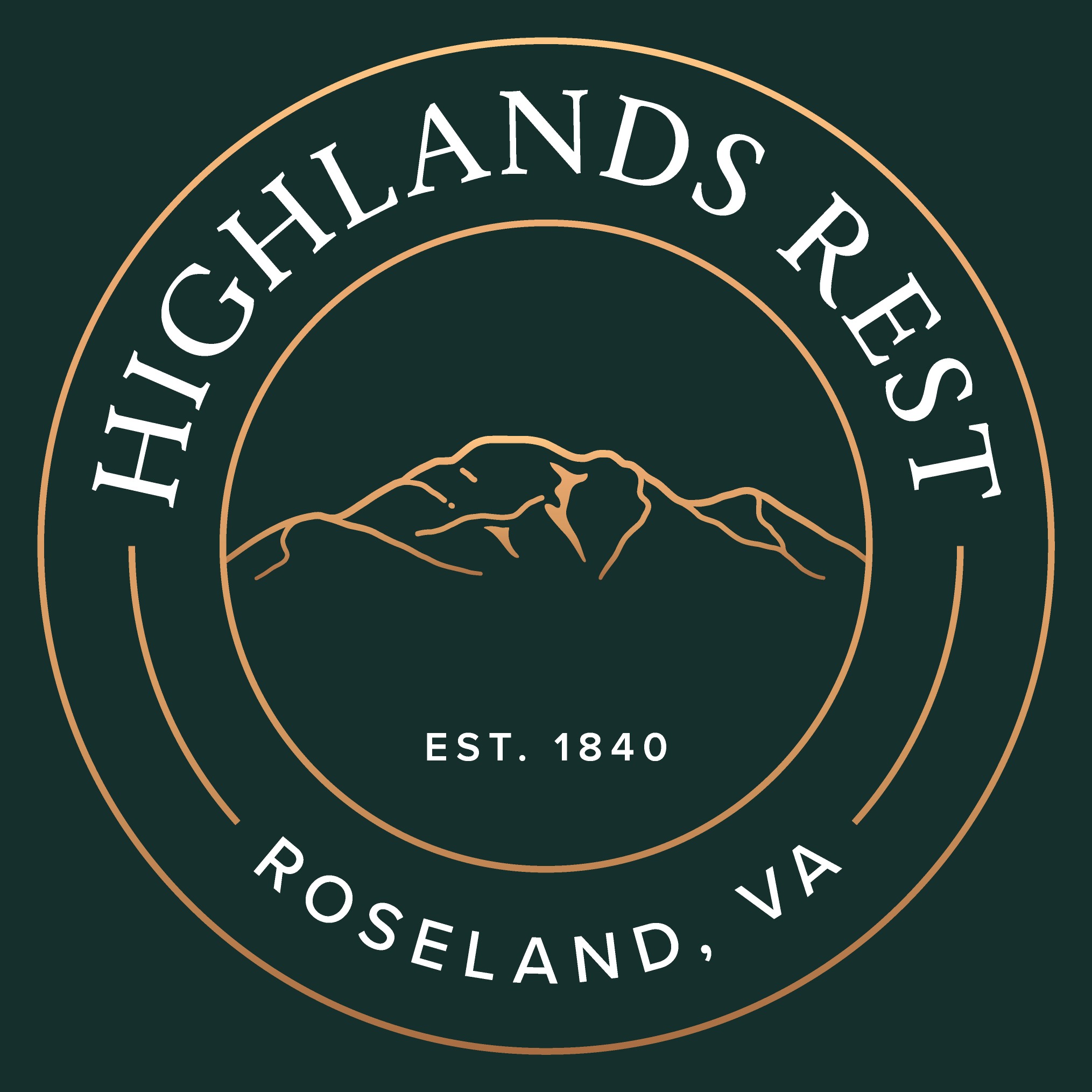
How Much Does A Horse Cost? The Complete 2025 Owner’s Guide
Author: Elliott Garber, DVM
If you’ve ever watched a horse gallop across a field or felt that magical connection during your first riding lesson, you’ve probably found yourself dreaming about horse ownership.
But then reality kicks in with that inevitable question: just how much does a horse cost?
The sticker price on a horse is just the beginning of a financial journey that can span 20-30 years. The real question isn’t just “how much does a horse cost to buy?” It’s “how much does it actually cost to be a responsible horse owner?”
That’s exactly what we’ll unpack in this comprehensive guide, drawing from the latest 2025 data and expert insights to give you the complete financial picture.

Why Should You Plan Your Horse Budget Before You Buy?
Before we get into the numbers, let’s talk about why getting this right is so crucial.
Horses aren’t like other purchases where you can return them if your situation changes. They’re living beings that depend on you for everything, and underestimating costs doesn’t just hurt your wallet. It can compromise your horse’s welfare.
Financial planning becomes essential because horse ownership is a monthly commitment that continues whether you’re riding regularly or dealing with a busy life phase. You’ll need to budget for:
- Feed that gets delivered every few weeks
- Farrier visits every couple of months
- Routine vet care at least annually
That horse you buy today could be with you when your kids graduate high school, when you change careers, or when you’re planning retirement. The financial commitment needs to fit not just your current budget, but your anticipated future finances too.
Beyond the obvious costs, hidden expenses include surprise vet bills, equipment that wears out, and seasonal expenses like winter blankets or fly spray. Ethical breeding practices also play a role in initial costs: horses from responsible breeders often command higher prices but save money long-term through better health and training.
What Do Horses Actually Cost to Buy in 2025?
Let’s start with that first big number: the buying price.
And wow, is there a range here. You could find yourself spending anywhere from literally free to six figures, depending on what kind of horse you’re looking for and where life takes you in the horse world.
What Can You Expect for Different Horse Price Ranges?
At a glance:
| Category | Typical price | Notes |
|---|---|---|
| Budget-friendly | $0–$1,000 | Rescues, “free to good home,” BLM mustangs |
| Most buyers’ sweet spot | $1,500–$10,000 | Solid riding horses with basic training |
| Competition/specialty | $10,000+ | Show records, bloodlines, national-level can reach $50k–$100k+ |
What Can You Get for Under $1,000?
Rescue organizations might offer adoption fees of $200-$500, and occasionally you’ll see “free to good home” horses. The BLM mustang adoption program has horses available for as little as $25, though you’ll need proper facilities and experience with wild horses.
But extremely low-priced horses often come with significant challenges: they might be older needing expensive medical care, young and completely untrained, or have behavioral issues requiring professional help.

Why Do Most Horse Buyers Spend $1,500-$10,000?
This is where you’ll find the majority of solid riding horses.
Popular breeds like the American Quarter Horse, American Paint Horse, and Appaloosa typically fall in this range.
We’re talking about horses with basic training, reasonable temperaments, and no major health issues (the kind that can become wonderful partners for trail riding, lessons, or casual competitions).
When Do Horse Prices Jump Above $10,000?
Once you start looking at horses with serious training, champion bloodlines, or specific talents for competitive sports, prices jump significantly.
Breeds like Thoroughbreds, Warmbloods, and Arabians with show records often start around $15,000-$30,000, while horses with national-level competition records can easily reach $50,000-$100,000 or more.
At the extreme end, elite horses have sold for millions, though that’s far beyond typical horse ownership.
What Makes Some Horses Cost More Than Others?
Understanding why horses cost what they do helps you figure out whether you’re getting good value for your money.
Purebred horses from sought-after breeds like Thoroughbreds, Arabians, and Friesians typically cost well over $10,000, especially with documented pedigrees. A horse whose grandparent was a famous racehorse or Olympic competitor commands premium pricing because those genetics suggest potential for excellence.
Training is perhaps the biggest price driver. Professional training costs thousands (two years at $40 per session, twice weekly equals $4,000+), and that investment gets reflected in the price. A horse that’s proven safe for beginners or has show experience is incredibly valuable because someone else did the hard work of education.
Age and health status affect pricing significantly.
| Age Range | Price Impact | Details |
|---|---|---|
| Prime working years (7-15) | Highest prices | Peak health, proven ability |
| Young horses (under 7) | Lower cost | Potential rather than proven ability |
| Senior horses (20+) | Reduced prices | Limited working years remaining |
Understanding different horse breeds and their typical lifespans helps in making informed decisions.
Temperament and proven track records matter enormously.
A horse known to be calm, safe, and reliable (especially one that children can ride) is worth its weight in gold to many families.
Conversely, horses with behavioral issues or dangerous habits get priced much lower, though they might require expensive professional training to become safe partners.
Location affects pricing more than you’d expect. Prices in the Midwest U.S. often run lower than in coastal or more affluent regions for similar horses. But if you buy from far away, you’ll pay transport costs (typically $1-$3 per mile for professional horse hauling).
What Other Costs Come After Buying Your Horse?
Once you’ve found your horse, the spending is just getting started.
There’s a whole world of one-time expenses that come with bringing a horse into your life, especially if you’re a first-time owner starting from scratch.

Should You Pay for a Vet Check Before Buying?
Before you commit to buying any horse, investing in a thorough vet exam is crucial (and it’s money well spent even if you decide not to buy the horse).
| Exam Type | Typical Cost | What’s Included |
|---|---|---|
| Basic evaluation | $250 | Standard health check |
| With X-rays | $500+ | Imaging for soundness issues |
What makes this expense so valuable is that it can save you thousands down the road.
A good vet check can reveal developing lameness, heart problems, or other health issues that aren’t immediately obvious but could become expensive to manage.
Always use an independent vet (not the seller’s regular vet) to ensure you get an unbiased assessment.
How Much Does It Cost to Transport a Horse?
Unless the seller delivers, you’ll need to arrange transport. Professional horse shipping typically costs $1-$3 per mile, which can add up quickly if you’re buying from out of state. A 500-mile trip could easily cost $1,000 in transport fees.
Options for getting your horse home include professional shipping services, friends with trailers, or rental trailers if you have appropriate tow vehicle. Factor transport costs into your budget from the beginning. That perfect horse loses some appeal if getting them home doubles your initial investment. Different breeds like draft horses may require specialized trailers due to their size.
How Much Should You Budget for Saddles and Tack?
This is where first-time horse owners often experience sticker shock. You need a surprising amount of equipment to properly care for and ride a horse safely.
Basic Safety Equipment You Can’t Skip
| Item | Price Range | Notes |
|---|---|---|
| Quality halter | $20–$50 | Safety equipment – invest in sturdy items |
| Lead rope | $10–$30 | Essential for basic horse management |
These might seem like small purchases, but they’re safety equipment.
If you’re interested in specific breeds like miniature horses, remember that tack sizes will vary significantly.
How Much Should You Spend on a Saddle?
The saddle represents your biggest tack expense. Prices range dramatically:
| Quality Level | Price Range | Details |
|---|---|---|
| Serviceable used | $300–$600 | Basic functionality |
| Quality used/new | $500–$1,500 | Sweet spot for most riders |
| High-end new | $1,000–$3,000+ | Top quality materials and craftsmanship |
Many riders find their sweet spot around $500-$1,500 for a good saddle that fits both horse and rider properly.
What Saddle Accessories Do You Actually Need?
Don’t forget the saddle accessories:
- Saddle pads ($20-$50)
- Girths or cinches ($30-$100)
- Stirrups and leathers for English saddles ($50-$150)
- Bridles with bits ($60-$200 for complete setup)
These “little” expenses add up quickly.
Essential Safety Gear for Every Rider
A proper riding helmet ($50-$200) isn’t technically a horse cost, but it’s an essential safety investment that could save your life.
Total tack budget: First-time horse owners should budget $500-$2,000 for basic tack and equipment.
Quality used equipment can help you hit the lower end of that range while still getting safe, functional gear.
What Grooming Supplies Do You Really Need?
Beyond riding equipment, horses need daily care supplies. A complete grooming kit typically runs $50-$150 for basic tools: curry combs, brushes, hoof picks, mane combs, and cleaning supplies.
Additional supplies you’ll need:
- Buckets for water and feed ($10-$30 each)
- Basic first aid supplies ($50-$100)
- Weather protection blankets ($100-$300 each, depending on climate)
Climate considerations matter more for some breeds. Cold-hardy Icelandic horses need less blanketing than tropical breeds. Combined with tack expenses, many new owners invest around $300-$1,000 total in their initial equipment setup.
How Much Does It Cost to Keep Horses at Home?
If you’re planning to keep your horse on your own property, the infrastructure costs can be substantial:
How Much Does Safe Horse Fencing Cost?
Safe horse fencing for a few acres might cost $5,000-$10,000+ depending on materials and whether you hire installation help.
Different fencing options have varying cost profiles:
- Wood rail fencing
- Electric tape systems
- Mesh fencing
Each has different maintenance requirements too.
What Kind of Shelter Do Horses Need?
Shelter is non-negotiable.
| Shelter Type | Typical Cost | Details |
|---|---|---|
| Basic run-in shed | $2,000–$4,000 | Three-sided weather protection |
| Proper barn with stalls | $10,000+ | Full boarding facility |
Hidden Infrastructure Costs for Horse Properties
Additional infrastructure costs:
- Water lines to pastures and barn
- Electrical service to barn area
- Heated water systems for winter climates
Many first-time owners choose boarding for exactly this reason: the facility has already made these capital investments, and you pay monthly fees instead of large upfront construction costs.
Quality boarding facilities understand the needs of different horse types, from energetic Australian Brumbies to calm Clydesdales.
What Should First-Time Owners Budget for Setup Costs?
Let me walk through what a typical first-time buyer might expect to spend beyond the horse’s buying price:
| Item | Cost |
|---|---|
| Horse cost | $5,000 (solid family horse) |
| Pre-buy vet check | $300 |
| Transport | $200 (local delivery) |
| Basic tack (mix of new and used) | $800 |
| Grooming supplies and miscellaneous | $150 |
| Initial feed supply | $100 |
| Safety equipment for rider | $150 |
| Total initial outlay | Around $6,700 |
Your situation could vary significantly. Maybe you find great used equipment deals or already own some gear, bringing costs down, or perhaps you want higher-end equipment or buy a more expensive horse, pushing the total higher.
The key insight: the horse’s price typically represents just half to two-thirds of your initial investment. Plan accordingly to avoid the stress of unexpected expenses during those exciting first weeks of horse ownership.

What Does It Cost to Own a Horse Every Month?
Here’s where horse ownership gets real: the daily, weekly, and monthly expenses that continue for your horse’s entire life. Unlike that one-time buying price, these costs keep coming whether you ride daily or life gets busy and you barely make it to the barn.
How Much Do Horses Cost to Feed Each Month?
Horses are grazing animals designed to eat almost constantly, and feeding them properly represents your largest regular expense.
How Much Do You Spend on Hay Each Month?
A typical 1,000-pound horse needs roughly 1-2% of their body weight in forage daily:
- Daily requirement: 10-20 pounds of hay per day
- Monthly requirement: 300-600 pounds
| Hay Format | Price Range | Coverage |
|---|---|---|
| Small square bales | $4–$15 per bale | Varies by region and quality |
| By the ton | $150–$400 per ton | Better bulk pricing |
Do All Horses Need Grain and Supplements?
Grain and concentrated feeds add another layer of expense.
Not all horses need grain (some easy keepers do fine on just hay and pasture) but working horses or those struggling to maintain weight often need supplemental feeding.
A 50-pound bag of quality horse feed costs $20-$30 and might last 10-20 days depending on how much your horse needs.
When Are Horse Supplements Worth the Extra Cost?
Supplements can add up if your horse needs specific nutritional support:
- Joint supplements
- Vitamins
- Specialized feeds for senior horses
These might add $20-$50 monthly to your feed bill.
Expert estimates suggest feed costs typically run $150-$500 per month, with most horses falling around $250-$300 monthly.

Hay prices often spike in winter, especially during drought years or if weather affects hay production. Smart horse owners buy hay in bulk during good years and store it properly, but that requires upfront cash and storage space. This seasonal planning becomes even more critical when caring for multiple animals as discussed in our livestock management guides.
Is It Cheaper to Board Your Horse or Keep It at Home?
Your horse needs shelter, turnout space, and daily care (and how you provide these services dramatically affects your monthly expenses).
What Does Full Board at a Stable Include?
Full boarding might be the most expensive option monthly, but it includes the most services.
| Board Type | Monthly Cost | What’s Included |
|---|---|---|
| Full board | $500–$1,500 | Stall/pasture, feed, bedding, daily care |
| High-end training barns | $2,000+ | Premium facilities and services |
This usually includes:
- Stall or pasture space
- Feed (hay and basic grain)
- Bedding
- Daily turnout
- Basic care like feeding and stall cleaning
Is Pasture Board Right for Your Horse?
Pasture board offers a middle-ground option.
Horses live outside 24/7 with shelter available, typically costing $300-$500 monthly. This works well for horses that don’t need daily stall time and can handle weather changes.
How Much Can You Save with Self-Care Board?
Self-care or partial board arrangements let you handle some of the work yourself in exchange for lower fees. You might pay $200-$400 monthly for space while providing your own feed and doing your own stall cleaning.
What Are the Real Costs of Keeping Horses at Home?
Keeping horses at home eliminates boarding fees but creates other expenses:
| Monthly Expense | Estimated Cost |
|---|---|
| Feed directly purchased | $200–$300 |
| Bedding for stalls | $50 |
| Property maintenance | Variable |
The monthly cash outlay might be lower, but you’re trading money for time. Boarding barns provide staff and coverage; at home, you’ll need to arrange horse sitters or helpers for any trips.
What Does Horse Healthcare Cost Per Year?
Just like any animal, horses need preventive healthcare to stay healthy, and these costs are predictable and essential.
Horse Vaccinations
Annual vaccinations typically cost $150-$300 per visit, and most horses need shots at least once yearly (often twice for full protection against diseases like West Nile virus, Eastern/Western encephalitis, tetanus, and rabies).
Routine vaccines plus basic health checks average around $150-$200 every six months.
Dental Work
Dental care is essential but often overlooked by new owners.
Horse teeth grow continuously and need annual “floating” (filing sharp points) at around $200-$300 per session.
Neglecting dental care leads to:
- Weight loss
- Behavioral problems
- Expensive complications
Deworming
Deworming has evolved from frequent rotational programs to targeted approaches based on fecal egg count testing.
Budget around $40 yearly for deworming medications, though some horses might need more frequent treatment. This is part of ethical care practices that responsible horse owners should follow.
Coggins Testing
Coggins testing is required annually in most states for any horse travel and costs about $30-$50. This blood test screens for equine infectious anemia.
Total routine health care typically runs $300-$600 annually, though some sources estimate up to $650-$1,000 when you include all preventive care.
Breaking this down monthly means setting aside about $50-$80 for routine healthcare expenses.

How Much Do Farrier and Hoof Care Cost?
Horse hooves grow constantly and need professional care every 6-8 weeks regardless of how much you ride.
This isn’t optional maintenance (neglected hooves lead to lameness and suffering). This care requirement is the same whether you own a compact American Miniature Horse or a towering Percheron.
Hoof Trimming Cost
Basic trimming for barefoot horses typically costs $40-$75 per visit.
With visits every 6-8 weeks, that’s roughly 7-8 visits yearly, totaling $300-$600 annually for basic hoof care.
Horse Shoes Cost
Shoeing increases costs significantly:
| Shoeing Option | Cost per Visit | Annual Cost |
|---|---|---|
| Front shoes only | $80–$120 | $480–$720 |
| Full set (four shoes) | $120–$200 | $720–$1,200 |
| Specialty/corrective | Much higher | Varies significantly |
Annual farrier costs typically range from $400-$1,000 for most horses, though horses needing therapeutic shoeing or frequent adjustments can cost significantly more.

Budgeting around $80 monthly for farrier care covers most situations and ensures you’re not scrambling to find money when your horse’s feet need attention.
Is Horse Insurance Worth the Cost?
While not required, horse insurance can protect against catastrophic losses and provide peace of mind.
Mortality insurance acts like life insurance for your horse, typically costing 2.5-4% of the horse’s insured value annually.
Insuring a $10,000 horse might cost $300 yearly, with many companies having minimum premiums around $250.
Major medical insurance helps cover surgical and emergency health costs.
Adding medical coverage might cost an additional $200+ annually but could provide $5,000-$10,000 in coverage for procedures like colic surgery.
Do You Need Liability Insurance for Horse Ownership?
Liability insurance protects you if your horse injures someone or damages property. This might be covered under homeowner’s policies or available through equestrian organizations.
For a typical pleasure horse, combined mortality and medical insurance might cost $300-$600 annually (significant enough to consider, but potentially valuable if you face major health expenses).
How Much Do Most People Spend on Horse Care Monthly?
Let’s put this together with a realistic monthly budget for different scenarios:
Monthly Budget Example: Boarding Your Horse
| Expense Category | Monthly Cost |
|---|---|
| Board | $600 |
| Farrier | $80 |
| Vet fund | $50 |
| Insurance | $30 |
| Miscellaneous | $20 |
| Total | ~$780 monthly |
Monthly Budget Example: Keeping Your Horse at Home
| Expense Category | Monthly Cost |
|---|---|
| Feed | $300 |
| Bedding | $50 |
| Farrier | $80 |
| Vet fund | $50 |
| Insurance | $30 |
| Property maintenance | $40 |
| Total | ~$550 monthly |
These figures translate to roughly $3,000-$6,000 annually for basic horse ownership, not including training, showing, or emergency expenses. Unlike gym memberships you can pause or hobbies you can set aside, horses need daily care and monthly expenses that don’t pause for your schedule.
Why You Need an Emergency Fund for Your Horse
Here’s what experienced horse owners know that newcomers often don’t: it’s not if your horse will have a medical emergency or unexpected expense; it’s when.
What Do Horse Emergency Vet Bills Actually Cost?
Colic Surgery Cost
Colic remains the most expensive common emergency.
This general term for abdominal pain ranges from mild discomfort treated with pain medication to life-threatening conditions requiring emergency surgery.
| Severity Level | Treatment | Typical Cost |
|---|---|---|
| Mild colic | Pain medication, fluids | Few hundred dollars |
| Severe colic | Emergency surgery | $5,000–$10,000+ |
Even non-surgical emergency calls (the vet arriving at 2 AM to give fluids and pain medication) can cost several hundred dollars.
Common Horse Injuries
Injuries seem to find horses no matter how careful you are.
Common injury costs:
- Laceration requiring stitches: Few hundred dollars
- Fractures or severe soft tissue injuries: Thousands in diagnostics, surgery, rehabilitation
- Joint or tendon injuries: Expensive imaging (X-rays, ultrasounds, MRIs)
Long-Term Horse Health Issues
Chronic conditions develop over time:
- Laminitis: Painful hoof condition requiring special farrier work, medications, ongoing care
- Cushings disease: Lifetime medication and monitoring
- Metabolic disorders: Long-term management challenges
What Other Emergency Costs Should You Prepare For?
Horses can face various emergencies:
- Food choking incidents
- Respiratory infections
- Storm or facility-related injuries
- Natural disaster evacuations
Financial experts recommend maintaining at least $1,000-$2,000 readily available for horse emergencies, though many experienced owners suggest having access to more (ideally enough to cover colic surgery around $7,500 if you would choose that option).
Financing Options for Horse Emergencies
Credit options can supplement cash savings:
- CareCredit (medical financing for animals)
- Credit card with available balance specifically for horse emergencies
- Payment plans offered by some animal hospitals
How Does Horse Insurance Work with Emergency Costs?
Insurance coordination matters if you carry equine medical insurance.
Remember that you typically pay upfront and get reimbursed later, so you still need immediate access to funds even with insurance coverage.

Complete Horse Cost Breakdown: What to Expect in 2025
Now that we’ve covered all the individual expenses, let’s put everything together into a comprehensive picture of what horse ownership actually costs in 2025.
These figures come from recent cost studies and expert analyses, giving you current, realistic expectations.
What Do Different Types of Horses Cost in 2025?
Horse prices span an enormous range:
| Category | Price Range | Details |
|---|---|---|
| Budget/project horses | $0–$1,000 | Often with significant training or health needs |
| Quality riding horses | $1,000–$10,000 | Most common range for solid horses |
| Competition and specialty | $10,000–$50,000+ | Higher training and bloodlines |
| Elite horses | $50,000–$1,000,000+ | Rare but real at top levels |
What One-Time Costs Come After Buying Your Horse?
| Category | Cost Range |
|---|---|
| Pre-buy vet exam | $250–$500 |
| Essential tack and equipment | $500–$2,000 (basic setup) |
| Grooming supplies and miscellaneous | $100–$300 |
| Transportation | $100–$1,000+ (distance dependent) |
| Facility setup (if applicable) | $1,000s for fencing, shelter, utilities |
Total typical initial investment: $1,000-$5,000 beyond the horse’s price
How Much Does It Cost to Care for a Horse Each Year?
Here’s where you see the real cost of horse ownership, broken down by major categories:
| Category | Annual Cost | Monthly Equivalent |
|---|---|---|
| Feed and bedding | $1,800–$6,000 | $150–$500 |
| Boarding fees (if applicable) | $3,600–$24,000 | $300–$2,000 |
| Routine health care | $300–$600 | $25–$50 |
| Farrier services | $400–$1,000 | $35–$85 |
| Insurance (optional) | $300–$600 | $25–$50 |
| Miscellaneous | $200–$500 | $15–$40 |
Total Annual Cost of Horse Ownership
| Care Level | Annual Cost |
|---|---|
| Conservative (basic care) | $3,000–$6,000 |
| Moderate care with boarding | $5,000–$10,000 |
| High-end care with training/showing | $10,000–$20,000+ |
Industry analyses suggest ongoing annual costs can range from roughly $4,600 on the low end to $34,000 on the high end, though that upper figure includes expensive training board and extensive showing activities.
How Much Will You Spend Over Your Horse’s Lifetime?
Consider that horses typically live 25-30 years.
A horse bought at age 5 might be with you until age 30 (that’s 25 years of care costs). Even at conservative estimates of $4,000 annually, you’re looking at $100,000 in care costs over the horse’s lifetime.

With higher-end care, that figure could easily reach $200,000-$300,000.
This isn’t meant to scare you away from horse ownership, but rather to emphasize the importance of realistic financial planning.
The most expensive horse is often the one you can’t afford to care for properly.
Do Horse Costs Vary by Location?
Remember that all these figures can vary significantly based on your location:
| Region Type | Cost Impact |
|---|---|
| Rural areas | Often lower boarding and feed costs |
| Urban/coastal regions | Typically higher prices across all categories |
| Regional hay availability | Affects feed costs dramatically |
| Local service availability | Influences vet and farrier pricing |
Always research costs in your specific area rather than relying solely on national averages.
Call local feed stores, boarding facilities, vets, and farriers to get current pricing for your location. This research approach is part of the strategic planning that successful horse owners use.
How Should You Plan Your Horse Ownership Budget?
When planning your horse ownership budget, consider this approach:
- Calculate the high end of all estimates for your situation
- Add 20-30% for unexpected expenses and inflation
- Make sure you can comfortably afford this amount without compromising other financial obligations
- Build in flexibility for emergency expenses or economic changes
If the numbers feel overwhelming, consider alternatives:
- Leasing arrangements
- Half-leasing partnerships
- Sharing ownership costs
These options let you experience horse ownership while splitting financial responsibilities.
The goal isn’t to find the cheapest way to own a horse, but to find a sustainable approach that ensures both you and your horse thrive for years to come.
How Does Preventive Care Save Money Long-Term?
Maintaining consistent preventive care actually saves money long-term.

Here’s how prevention pays off:
- Regular farrier visits prevent more expensive hoof problems
- Routine dental care prevents weight loss and digestive issues
- Staying current with vaccinations prevents expensive disease treatment
Does Better Feed Actually Save You Money?
Quality nutrition prevents many health problems.
While premium feed costs more upfront, horses often need less of it to maintain good condition, and better nutrition supports overall health, potentially reducing health expenses. This is especially important for senior horses who may have special dietary requirements.
Why Should You Address Small Problems Immediately?
Prompt attention to minor issues prevents them from becoming major problems.
That small cut treated with $10 of first aid supplies won’t become an infected wound requiring $300 in care.
How Can You Save Money Without Compromising Horse Care?
The key to all cost-cutting strategies is maintaining your horse’s welfare while managing expenses responsibly.
Never compromise on:
- Basic safety equipment (properly fitting, safe tack and helmets)
- Essential healthcare (routine health and farrier care)
- Adequate nutrition (sufficient quality feed and water)
- Appropriate shelter (protection from weather extremes)
The goal is sustainable horse ownership that works for your budget while making sure your horse receives excellent care.
Sometimes spending slightly more upfront (on better equipment, better feed, or more qualified service providers) saves money long-term by preventing problems or lasting longer.
Remember that the most expensive horse is one you can’t afford to care for properly.
What Are Your Cheapest Horse Boarding Options?
Cooperative Horse Boarding
Cooperative boarding arrangements can reduce costs while maintaining quality care.
Some horse owners create informal groups to share boarding expenses, with members helping with daily care in exchange for reduced fees.
Can You Share Pasture Space to Cut Costs?
Pasture sharing works when you can keep your horse on private property in exchange for basic care or maintenance help. Always formalize these arrangements with written agreements to protect both parties.
How Can Leasing Help Offset Your Horse Costs?
Half-leasing or sharing arrangements let you offset ownership costs by allowing someone else to ride your horse regularly in exchange for monthly payments or help with expenses.
This can work particularly well if you have limited riding time but want to maintain ownership.
Where Should You Look for Horses to Buy?
Now that you understand the financial commitment, let’s talk about where you’ll actually find your future horse.
The source you choose can significantly affect not just the initial price, but your overall experience and long-term costs.

Buying the right horse initially might cost more upfront but saves money long-term.
As experienced buyers know, spending extra for a healthy, well-trained horse often costs less than buying cheaply and paying for training, behavior work, or health issues later.
Networking within the horse community can lead to better deals and valuable advice.
Horse people often know about:
- Quality horses before they’re advertised publicly
- Good used equipment recommendations
- Shared resources like preferred vets or farriers
For those building their horse business, our comprehensive tools section offers name generators for everything from kennels to pet stores.
How Can You Build Relationships with Vets and Farriers?
Developing relationships with service providers can lead to better pricing and service.
Farriers and vets often offer discounts for:
- Multiple horses
- Loyal long-term clients
Being flexible with scheduling and paying promptly can earn you preferred client status.
Should You Buy from Private Horse Owners?
Individual sellers represent the largest segment of horse sales, whether through online classifieds, word-of-mouth, or local advertising.
Prices here vary enormously (you might find anything from a desperate owner needing to rehome quickly to someone holding firm on premium pricing for a special horse).
Benefits of Buying from Private Sellers
The advantages include:
- Potential negotiation opportunities
- Direct communication with someone who knows the horse’s history
- Often more flexibility in trial periods or terms
When checking out private sales, research comparable pricing for similar horses to understand if asking prices reflect fair market value.
Warning Signs You Should Watch Out For
Red flags in private sales include sellers who:
- Won’t allow vet examinations
- Can’t provide basic health records
- Seem evasive about the horse’s history or reason for sale
Trust your instincts (if something feels off, investigate further or consider other options).
Should You Buy from Professional Horse Breeders?
Breeder sales often focus on younger horses with documented bloodlines.
You’re typically paying for genetic potential and the breeder’s reputation. Prices tend to be less negotiable since breeders have specific market positioning, but you often get detailed health records and genetic background.
Are Horse Trainers and Dealers Worth the Higher Prices?
Trainer and dealer sales usually offer horses with more training and proven track records.
These sellers stake their professional reputations on the horses they sell, so they’re often motivated to match horses appropriately with buyers. However, expect to pay for the professional training and handling that went into the horse.
Professional operations often specialize in specific breeds like Warmbloods or Tennessee Walking Horses.

Can You Find Good Horses Through Rescue Organizations?
Horse rescues provide opportunities to give deserving horses second chances while often spending less on initial price.
Adoption fees typically range from $200-$1,000, with many rescues including basic health care like vaccinations and Coggins testing in the fee.
Should You Consider Adopting a Wild Mustang?
The Bureau of Land Management mustang program offers wild horses for adoption starting at $25 for untrained horses.
However, these horses require extensive training and handling by experienced horsemen (they’re not appropriate for beginners).
What Do Horse Rescues Require from Adopters?
Rescue adoption often involves:
- Application processes
- Facility inspections
- Follow-up requirements
While this might seem intrusive, good rescues are making sure their horses go to permanent, appropriate homes.
Are Horse Auctions Good Places to Find Deals?
Horse auctions span from high-end breed sales where horses sell for thousands to lower-tier auctions where horses might go for hundreds or less.
The challenge is that you typically can’t perform vet examinations beforehand, and horses may have unknown health or behavioral issues.
What Should You Know About Budget Horse Auctions?
Low-end auctions often represent last chances for horses who might otherwise go to slaughter buyers.
While you can find diamonds in the rough, these situations require experience to check out horses quickly and realistically assess what you’re taking on. Mixed breed horses and grade horses are common at these venues.
Are High-End Horse Auctions Worth Attending?
Elite auctions for specific breeds or disciplines can offer exceptional horses with detailed records and pedigrees, but expect to pay premium prices that might exceed what you’d pay privately for similar horses.
Prestigious breeds like Andalusians and Friesians often command top dollar at these venues.
Should You Buy a Horse Online?
Digital platforms have revolutionized horse shopping, allowing you to browse hundreds of horses from your computer and filter by price, location, breed, and training level.
Using reputable online marketplaces provides access to verified sellers and secure transaction processes, reducing the risk of scams or misrepresented horses that could cost you later.
Creatures.com represents the next generation of online animal marketplaces, pre-verifying sellers and providing secure transaction environments that give buyers confidence when purchasing from unfamiliar sellers.

How Can You Find Horses Before They’re Advertised?
Word-of-mouth sales through trainers, vets, farriers, and other horse community members often yield excellent matches.
These professionals see many horses and understand both horse quality and owner needs, so they can make thoughtful recommendations. If you’re working with professional facilities, our horse boarding name generator might inspire creative stable names.
How Can Horse Communities Help Your Search?
Breed organizations, riding clubs, and local horse groups often have members who know about quality horses before they reach public advertising.
Whether you’re interested in draft horses or sport ponies, letting your network know you’re looking (and being specific about your needs and budget) can lead to private sales opportunities.
How Can You Avoid Horse Buying Scams?
Regardless of source, verifying seller credibility should be standard practice.
What Makes a Horse Seller Trustworthy?
- Provide detailed, honest descriptions of horses
- Welcome vet examinations
- Have references from previous buyers or industry professionals
- Can provide health records and background information
- Allow reasonable trial periods or return policies
Remember that extremely low prices usually have explanations.
As marketplace guides emphasize, horses priced significantly below market value often have training, health, or behavioral issues that will require additional investment to address.
Buying Your First Horse
Don’t rush major decisions.
Take time to see multiple horses, ask questions, and really understand what each horse offers. The excitement of horse shopping can lead to impulse buys that don’t work out long-term.
What Should You Consider Beyond the Purchase Price?
Consider total cost of ownership beyond initial price.
A $2,000 horse needing $3,000 in immediate training might be more expensive than a $4,000 horse ready to ride immediately. Well-trained horses from reputable sources, available through platforms like Creatures.com, often represent better long-term value.
When Should You Get Professional Help?
Trust professional advice when available.
If you’re inexperienced, bringing a knowledgeable friend, trainer, or even hiring a professional horse buyer can prevent expensive mistakes and help you find horses that truly match your needs and abilities.
The goal is finding not just a horse you can afford to buy, but one you can afford to own and enjoy for many years.
Taking time to understand your options and check them out carefully sets the foundation for a successful long-term partnership. Whether you’re drawn to the elegance of an Arabian or the versatility of a Quarter Horse, the right match makes all the financial investment worthwhile.
What Are Your Alternatives to Buying a Horse?
If full ownership feels financially daunting right now, consider these alternatives that provide horse experience while sharing costs:
How Much Does It Cost to Lease a Horse?
| Lease Type | Monthly Cost | What You Get |
|---|---|---|
| Full lease | $200–$500 + care expenses | Regular riding and care responsibilities |
| Partial lease | $100–$300 | Several rides per week |
The owner maintains ultimate financial responsibility.
Can You Share Horse Ownership with Someone Else?
Half-ownership or partnerships split initial price and ongoing costs between multiple people.
This works best with clear written agreements about:
- Schedules
- Expenses
- Decision-making
How Can You Get Horse Experience Without Owning?
Working student or intern positions at training barns often provide riding opportunities in exchange for barn work.
You gain experience and horse time while learning from professionals. These positions often provide exposure to high-quality horses like Anglo-Arabians and Dutch Warmbloods.
Are Riding Lessons a Good Alternative to Ownership?
Lesson programs with school horses let you develop skills and satisfy your horse fix without ownership responsibilities.
Many programs allow students to lease school horses for shows or additional riding time. If you’re considering starting a teaching operation, our horse riding school name generator can help with branding ideas.
How Do You Know When You’re Ready to Own a Horse?
When Is the Right Time to Buy Your First Horse?
Trust your instincts about timing.
If you’re already stretching your budget to afford horse ownership, wait until you have more financial cushion. Horses deserve owners who can provide excellent care without financial stress.
What Type of Horse Should First-Time Owners Buy?
Start with appropriate horses.
Your first horse should match your experience level and intended use. The perfect beginner horse might cost more initially but saves money on training, health bills from rider errors, and potential insurance claims.
Reliable breeds like Quarter Horses and calm Morgan horses often make excellent first horses.

What Should You Have Ready Before Buying a Horse?
Plan for success by making sure you have:
- Monthly expenses covered comfortably within your budget
- Emergency funds for unexpected health costs
- Appropriate facilities or boarding arrangements
- Support network of experienced horse people
- Time commitment for daily care or regular barn visits
Only you can determine if horse ownership aligns with your financial reality and life priorities. The costs are significant and non-negotiable. Horses need quality care regardless of economic conditions or personal circumstances.
But for those who choose this path and plan appropriately, horse ownership provides rewards that transcend monetary considerations. The partnership, growth, joy, and memories created often make every dollar spent feel worthwhile.
If You’re Ready for Owning a Horse
If you decide to move forward, do so with:
- Knowledge
- Preparation
- Realistic expectations
Research thoroughly, budget conservatively, and choose horses that match your experience level and goals.
If now isn’t the right time, that’s perfectly fine too.
Horses will always need homes, and taking time to prepare financially and educationally makes you a better owner when you’re ready.
The most important thing is making sure that both you and your future horse thrive together for many years to come. When that happens, most horse owners find that their horses are worth every penny.

Planning your horse purchase? Explore horses available on Creatures.com, where verified sellers and secure transactions make finding your perfect partner easier and safer. If you’re ready to take the next step, you might also find our horse name generator helpful for brainstorming the perfect name for your future companion.

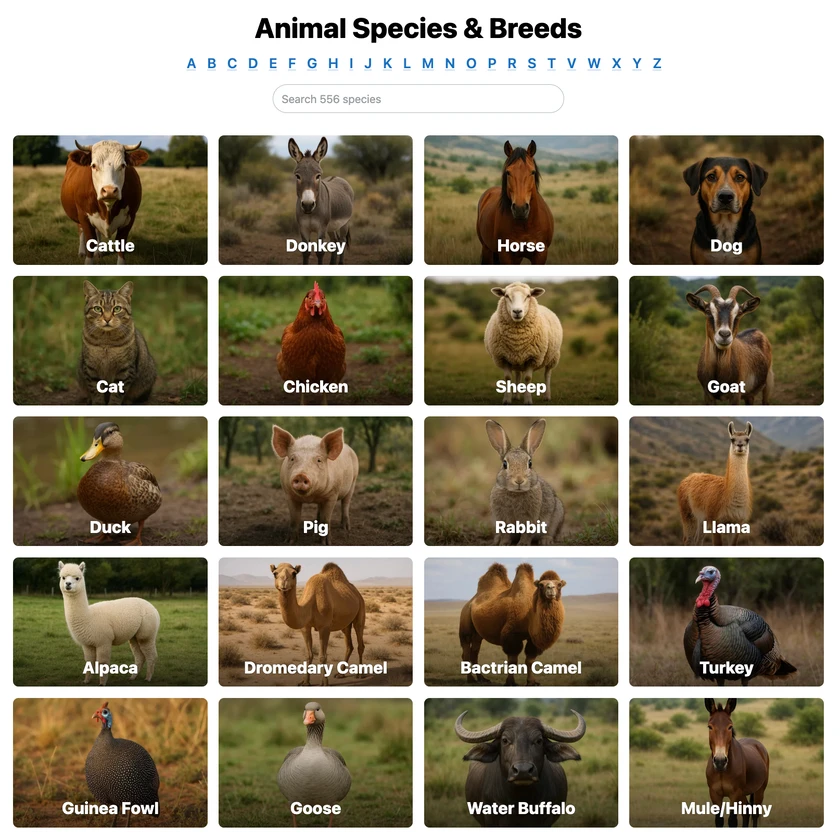 All Species & Breeds
All Species & Breeds
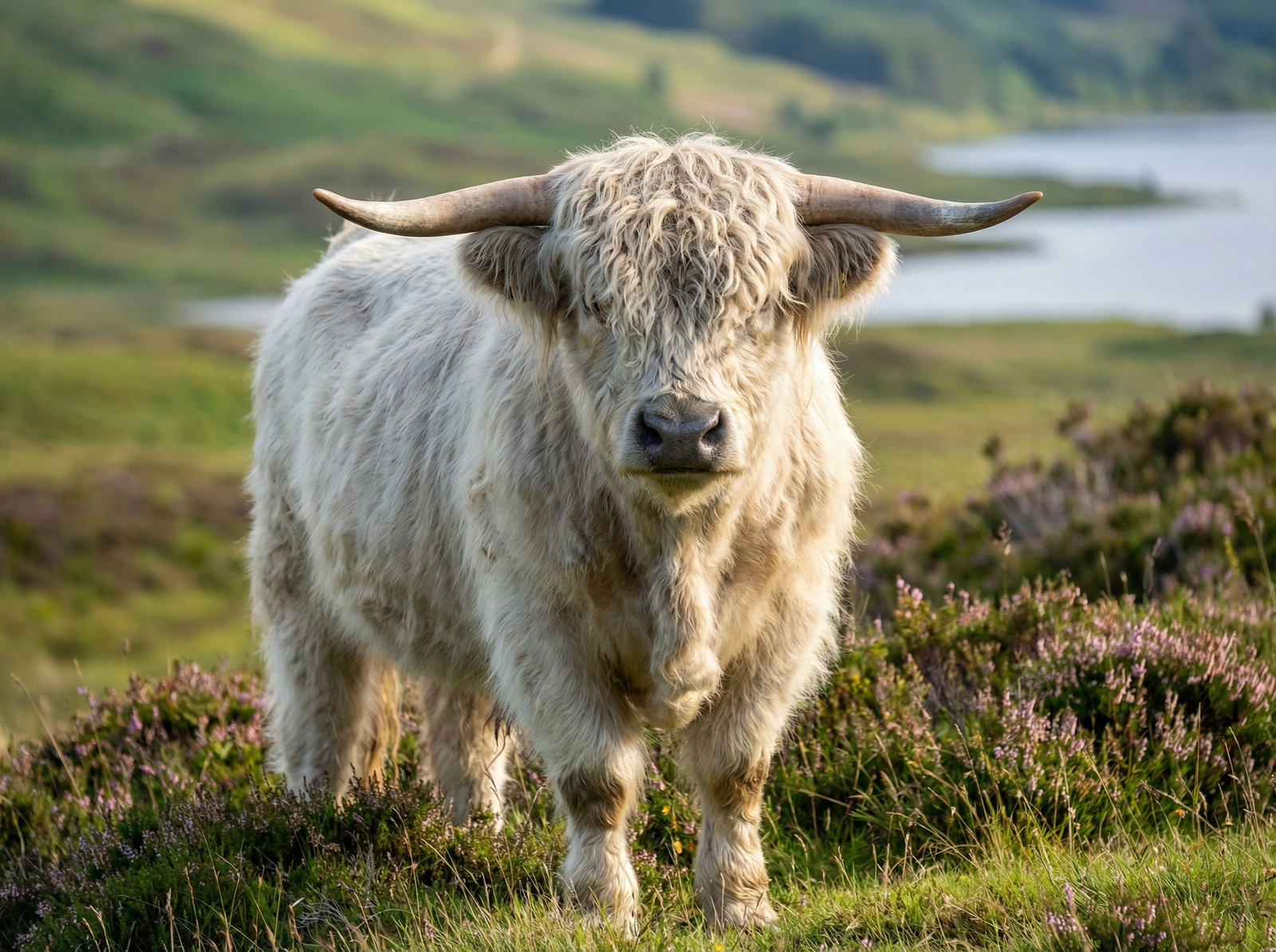 Highland Cattle
Highland Cattle
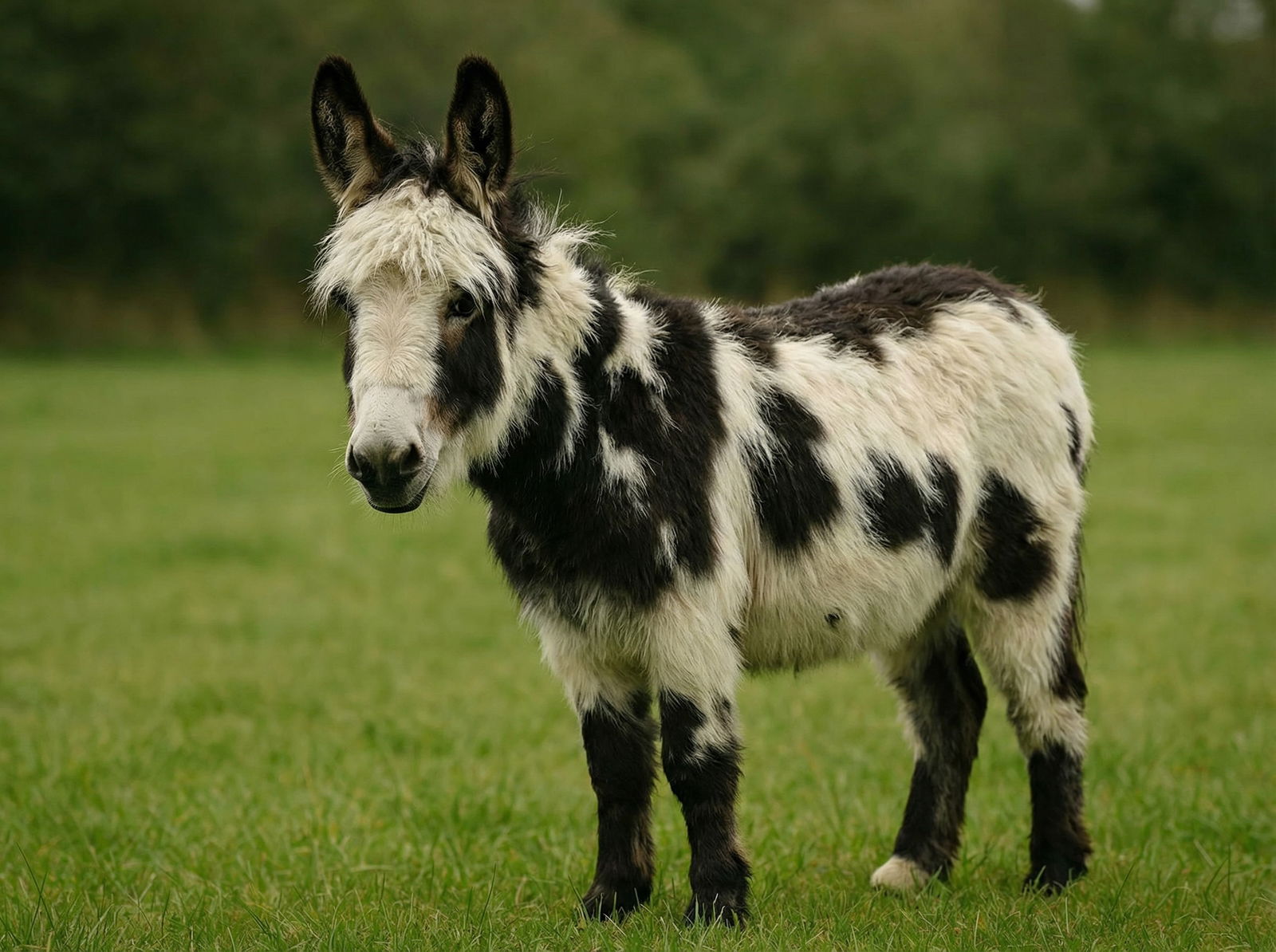 Miniature Donkeys
Miniature Donkeys
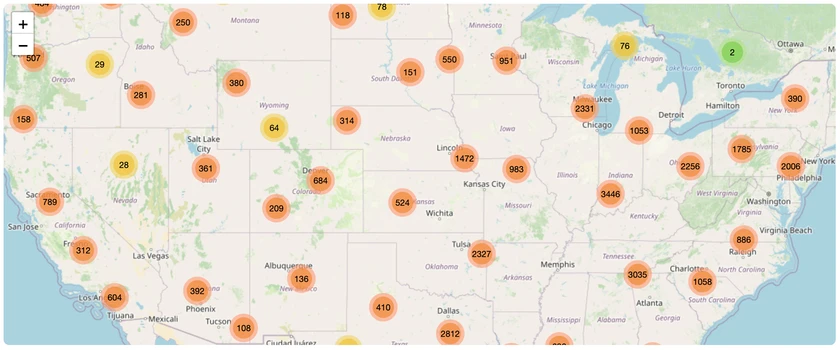 All Species Directory
All Species Directory
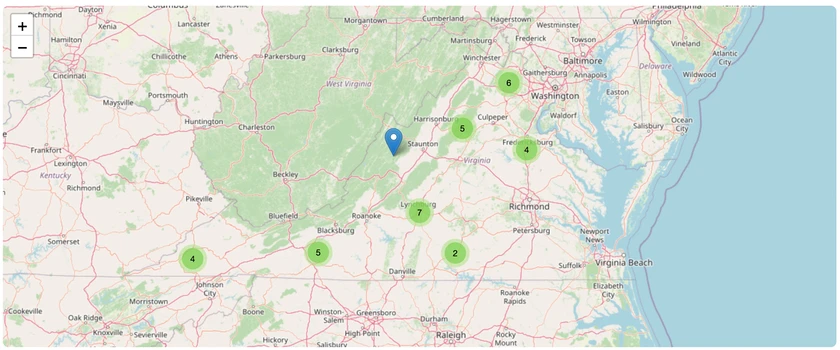 Highland Cattle in Virginia
Highland Cattle in Virginia
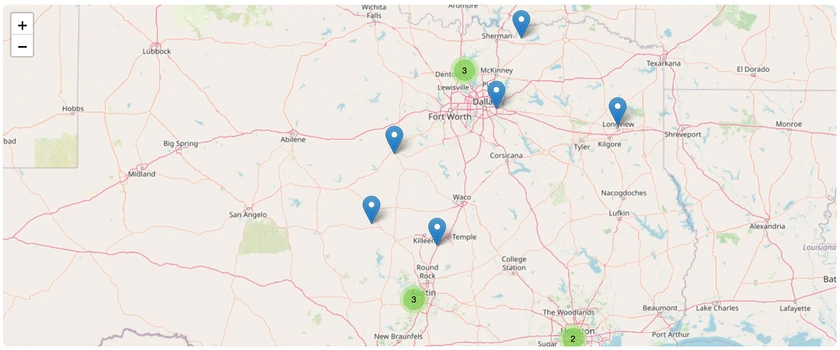 Miniature Donkeys in Texas
Miniature Donkeys in Texas
